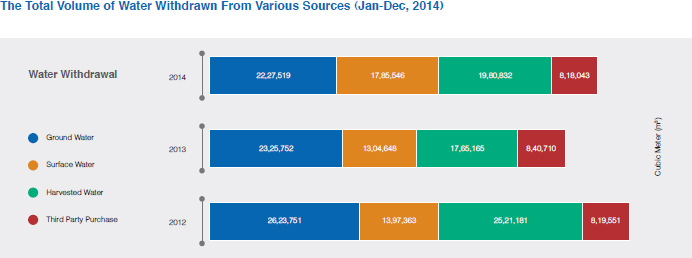Most of our plants do not discharge any water or
waste-water into natural resources like land, streams, lakes
or ponds. In 2014, the total water discharged by few of our
plants was about 31,570 m3 which is about 0.5% of our
total water withdrawal. Thus, no water bodies and related
habitats are affected by water discharge.
Due to it’s continuing effort towards water resource
management, local water sources are not significantly
affected by withdrawal by Ambuja. A water resource
estimation study is undertaken for ground or surface
water conservation in addition to regulatory requirements.
The Company’s efforts on water resource development
have been well appreciated by the community. The
community takes an active part in execution of these
partnership programmes with support from the local
government, and other NGOs. No water source or
protected area (nationally or internationally) is disturbed for
water withdrawal. In fact, the Company’s water resource |
management programmes have positively impacted the
biodiversity in some areas. This has been appreciated by
different stakeholders. Ambuja is aware of the value of
water source to local communities and indigenous peoples
in its areas of operation and takes their support in
conjunctive development of water resources.
India Water Tool with WBCSD
We continued our active participation in the development
of India Water Tool Version 2 (IWT v 2.0) of World
Business Council for Sustainable Development (WBCSD)
along with WRI, CII Triveni Water Institute and 10 other
Indian companies. This tool is a step towards improved
water management by industry in India. The tool (IWT v 1)
was launched in 2012. It helps companies understand
and respond to the growing challenges of managing
water effectively. Version 2 of the tool will be launched in
February 2015. |


























